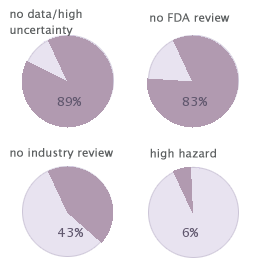The following chemicals can be found in L' Oreal hair color:
P-Phenylenediamine Prohibited or restricted use, occupational hazards; linked to cancer, developmental/ reproductive toxicity, allergies, irritation, organ system toxicity, endocrine disruption, and neurotoxicity. Ceteareth-30
Prohibited or restricted use, contamination concerns, enhanced skin absorption; linked to organ system toxicity, irritation, and neurotoxicity. Peg-180
Prohibited or restricted use, contamination concerns; linked to cancer, developmental/ reproductive toxicity, organ system toxicity, irritation, and endocrine disruption. Micronized Titanium Dioxide
Enhanced skin absorption, occupational hazards, biochemical/ cellular level changes, ecotoxicology; linked to cancer, allergies, organ system toxicity, and irritation. Eugenol
Prohibited or restricted use; linked to cancer, allergies, neurotoxicity, organ system toxicity, irritation, and endocrine disruption. Resorcinol
Prohibited or restricted use, occupational hazards, ecotoxicology; linked to cancer, allergies, irritation, endocrine disruption, organ system toxicity, and neurotoxicity. Overall, L'Oreal's ingredient concerns break down as follows: Graph provided by Skin Deep Database at http://www.cosmeticsdatabase.com/brand.php?brand_id=509
L' Oreal still conducts animal testing and has not signed the Compact for Safe Cosmetics--a pledge that the producer would stop using ingredients that are known or suspected to be harmful within three years of the signing. | In just one box of L' Oreal hair color (Superior Preference True Brunettes #63 Ultra Light Gold Brown) 5 of these chemicals were used: P-Phenylenediamine, Ceteareth-30, Eugenol, Fragrance, and Resorcinol. Overall, the hair color had a high hazard rating on the Skin Deep database (score 10 out of 10). The hazards of the product are broken down as follows:  Graph provided by Skin Deep database at http://www.cosmeticsdatabase.com/product.php?prod_id=170231
As a result of using P-phenylenediamine, hair color allergies are on the rise. People with severe reactions to the chemical develop rashes around the hair line and facial swelling, sometimes so severe hospitalization is required. Some hair colors use phthalates, dangerous chemicals that cause genital abnormalities in baby boys when mothers are exposed to them during pregnancy. Hair colors that use coal tar derivatives are linked to bladder cancer in women who use the colors frequently, as well as stylists who work with them frequently. Sources
|